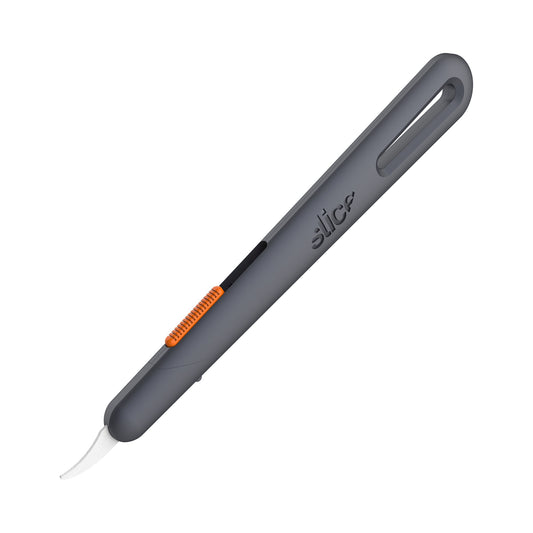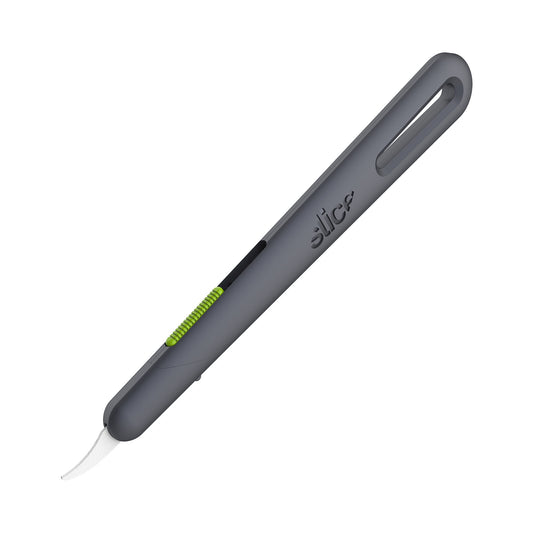Translation missing: pt-PT.accessibility.faq_content_title
What Is a Seam Ripper?
Seam rippers are tools designed to slide between sewn stitches and gently cut the thread without tearing at the surrounding fabric. They allow the user to cut, hook, and remove the thread from a seam, and they’re a life saver for tailors and seamstresses everywhere. Whether you’re altering a garment or fixing a mistake, these handy tools are just as critical in the world of sewing as an eraser is in the world of sketching.
The answer to the question: “What are seam rippers used for?”, however, is a bit different because, inevitably, once a tool is invented, humans find new uses for it. So this little gadget is more than just a sewing stitch remover. Seam ripper uses include detailed cutting and carving of soft media like clay, slipping into narrow cracks to cut tape or clean out a join, and cutting any material that needs to be hooked first, such as yarn that’s already been woven or knit into a fabric.
The answer to the question: “What are seam rippers used for?”, however, is a bit different because, inevitably, once a tool is invented, humans find new uses for it. So this little gadget is more than just a sewing stitch remover. Seam ripper uses include detailed cutting and carving of soft media like clay, slipping into narrow cracks to cut tape or clean out a join, and cutting any material that needs to be hooked first, such as yarn that’s already been woven or knit into a fabric.
What Kind of Seam Ripper Replacement Blades Does Slice Make?
Slice makes two different styles of seam ripper blades: the 10536 rounded-tip blade and the 10537 pointed-tip blade. A rounded tip will, of course, offer more protection against accidental punctures, either to you or to the fabric you’re working with. If safety isn’t your main priority, a pointed tip is narrower, making it ideal for even more detailed work. If you’re working with extremely small stitches, the pointed tip will slide in more easily.
What’s the Best Seam Ripper for Me?
The answer depends on what you plan to use it for. If you’ll use your tool primarily as a stitch ripper, choose either a 10536 blade for safety or a 10537 blade for very small stitches. If you’re looking for something more than a seam cutter, such as a sculpting tool, your blade choice will depend on the level of detail you need to achieve. Some carving actions in soft material don’t require a pointed tip (and we always recommend starting with a 10536 rounded tip for safety’s sake) but very detailed sculpting or scratchboard art will likely demand a 10537 pointed-tip blade.
Slice offers many different handle options, including: manual and auto-retractable seam rippers (10596 and 10597 respectively), two craft knife handles (10548 and 10589), a scalpel handle (10568) and the ring-handled Precision Knife (10580). Your choice of handle really depends on personal preference and what kind of space you have to work in.
Slice offers many different handle options, including: manual and auto-retractable seam rippers (10596 and 10597 respectively), two craft knife handles (10548 and 10589), a scalpel handle (10568) and the ring-handled Precision Knife (10580). Your choice of handle really depends on personal preference and what kind of space you have to work in.
How Do I Change the Blade on a Slice Stitch Ripper?
To change the blade on a Slice seam cutter, first identify the short side of the cap, which is located on the top of the seam tool, adjacent to the slider. Using the short side of the cap as though it were a hinge, lift the long side up. The long side will pop up, over the nub, or catch, and the whole cap will come off. At this point, extend the blade as far as possible and remove the old blade from its colored housing.
To add a new blade, simply line up the blade’s notch with the corresponding notch on the housing and retract the blade fully. To replace the cap, reverse the action you used to remove it, first lining up the short end of the cap with the top of the handle, adjacent to the slider. Then press down on the long side of the cap so it that it lines up with the handle and is held in place by the exposed catch.
Like all of our tools, the Slice seam rippers require no external tools to change the blade and are ergonomically designed to reduce hand strain.
To add a new blade, simply line up the blade’s notch with the corresponding notch on the housing and retract the blade fully. To replace the cap, reverse the action you used to remove it, first lining up the short end of the cap with the top of the handle, adjacent to the slider. Then press down on the long side of the cap so it that it lines up with the handle and is held in place by the exposed catch.
Like all of our tools, the Slice seam rippers require no external tools to change the blade and are ergonomically designed to reduce hand strain.


